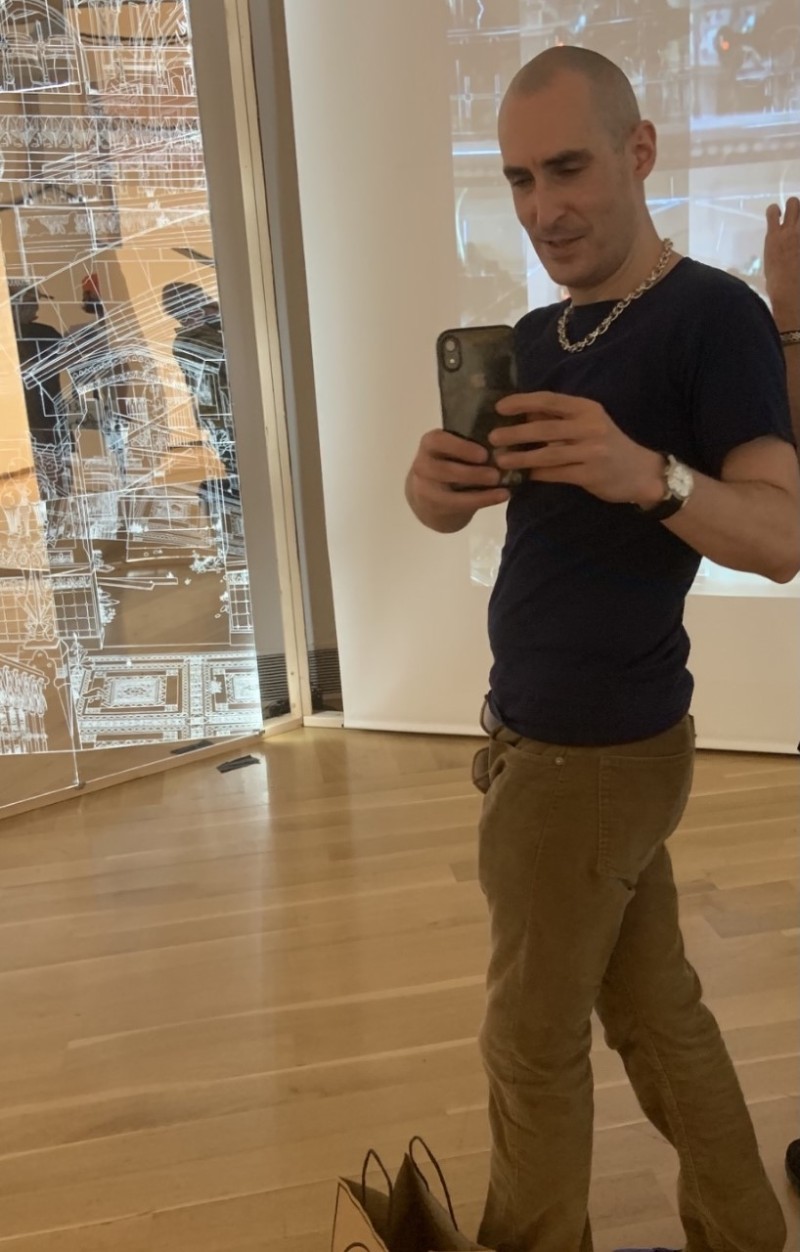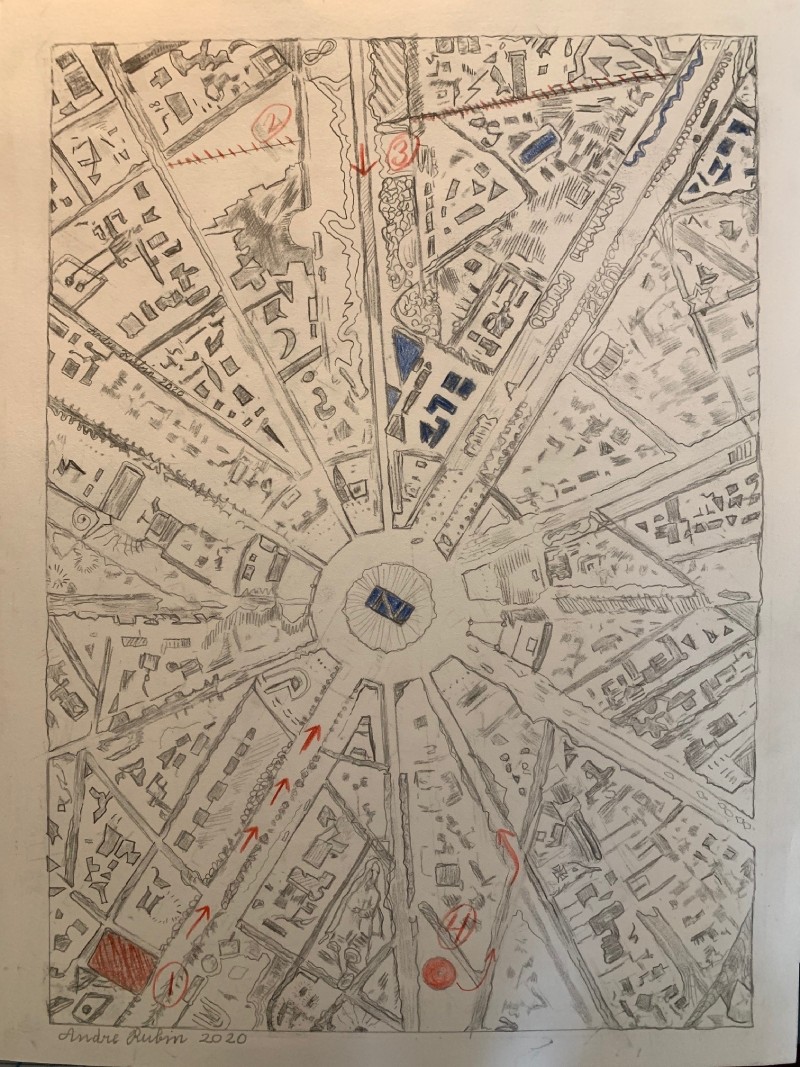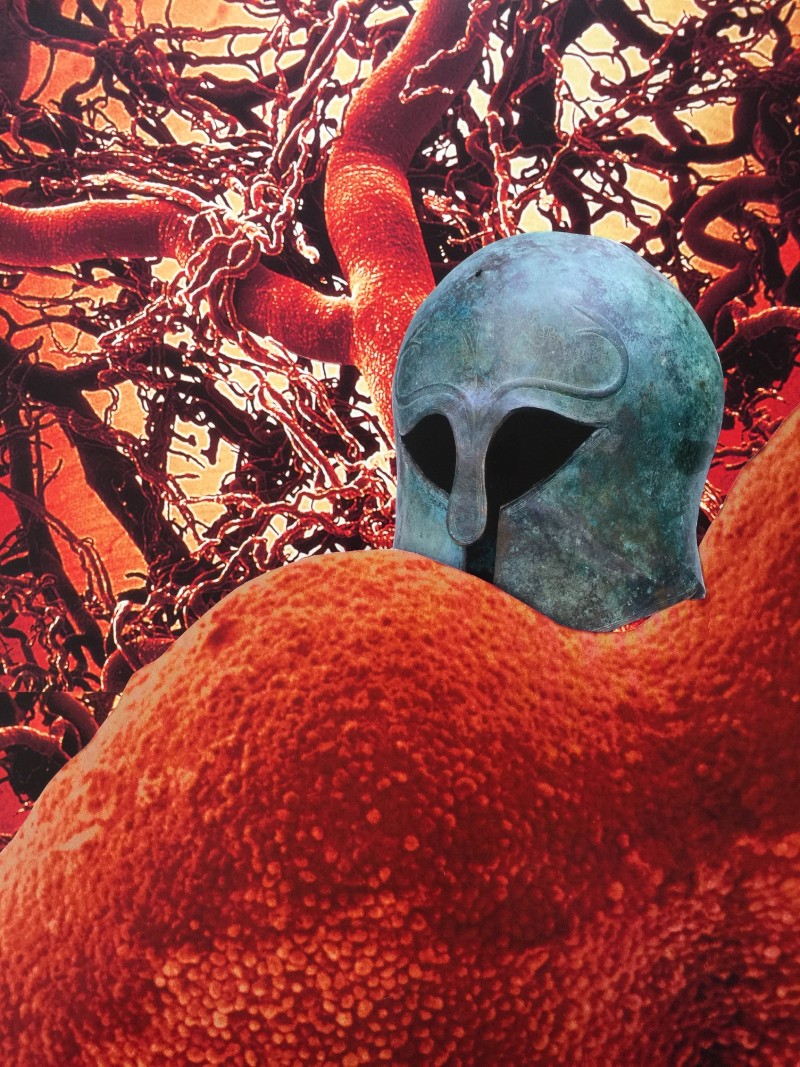
How did you start with art?
I am a second generation artist. My mother, Fiammetta Rubin, had a long career in a number of media including, most uniquely, large scale enamels. I studied philosophy in college and grad school. I went to law school and work as an attorney for my day job. I started making art in earnest in 2010 and started showing in exhibitions in 2015. Please see my website, andrerubin.com for more works and exhibitions.
What artists or movements have had an impact on you?
The European tradition of history painting impacts me. In that tradition, art is about telling a story, usually about the Bible, classical mythology or historical events; the goal of art is to teach and say something about the world, to reveal truth. Brueghel, El Greco, Rubens, Poussin, Piranesi, De Chirico and Delvaux are particular favorites. That tradition is very different from Modern and most contemporary art which operates as a self-referential “art architecture complex”.
Stylistically, I am interested in classical art and architecture (Greece and Rome) and its reception since the Renaissance. Thematically, I want to convey contemporary ideas about politics, the historical process and intellectual history: with every passing year, I find the passage of time – both personally and historically – to be the most uncanny thing about the world.

Technically, I am working in collage with a small number of elements from found images. Each small collage (mock up) can be made in an oversize format by enlarging the elements and making a large glued collage of large elements. This is no mere gimmick. It allows my work to be very large and printed on archival materials. But there is another outcome also. When one merely enlarges a small collage one sees the rough edges of the pieces also enlarged. By making an oversize collage, I can trim away these rough edges and make a very sharp image; the slight relief of two levels of heavy cotton paper further increases the sharpness. I also mount collages on canvas and glaze them.

Collage is entirely about the accident (and contingency).
What themes come up in your art and do the memories and personal experiences reflect?
My work is not about personal feelings, subjectivity, inner states, memories or sensation of color or shapes. It is more literary and philosophical. In a similar vein, in literary theory, the “intentional fallacy” doctrine holds that the author’s intent is not really relevant. Rather, the work stands on its own as a “text” (anything people make can be a text). My goal is to make images which are susceptible of many interpretations: the viewer is active in viewing the work. The works are distinct from me, my intentions and personal history. I have heard naïve criticisms about my work being impersonal and cold – like a “record cover”. But the fascination about art expressing inner states is the exception, not the rule, in the history of art (across all cultures).
What is the significance of material and color?
My work is not particularly concerned with color or surface. I love bright colors – De Stijl meets Lego and Star Wars.
Who or what are some of your artistic inspirations?
Sculpture, actually. I am drawn to two dimensional representations of sculpture and architecture.

What is your favorite art accident?
Collage is entirely about the accident (and contingency). That’s what makes it so much fun and so spontaneous and what makes it contemporary rather than forced and old fashioned.
What are you working on right now and what is next?
Apropos of the question before, my work is about chance encounters of found images. I have no idea what the next piece will be like until I make it.
What do you consider the role of an artist today?
Visual artists today have a very limited role in the world compared to other times. In the past artists were cultural heroes. They conveyed ideas about the past, disseminated religion and propaganda and naturalized the outlook of a dominant class. Artists have no such robust role at present. Avant-gardes may sound like fun, but they are a kind of ghettoization. From about 1860 the visual arts have been mostly about subjective sensation– modes of seeing the world rather than claims about its content.
With the growth of TV, film, video games, pornography, social media and each person’s “fifteen minutes of fame”, most people have neither the interest nor attention to unchanging 2d and 3d works; they are getting plenty of stimulation elsewhere.




